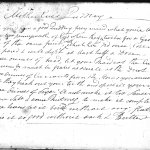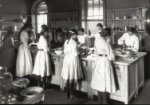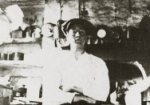I was drawn to this following recipe in Girlie Andersen’s copy of the Golden Wattle cookery book, circa 1948, as it requires no cooking. Instead, it uses the natural processes of alchemy and time to do their job – transforming, if not ‘cooking’ the ingredients into a rich dark chutney. It is delicious with cheddar style cheese, cold and cooked meats – ham, sausages, corned beef etc.
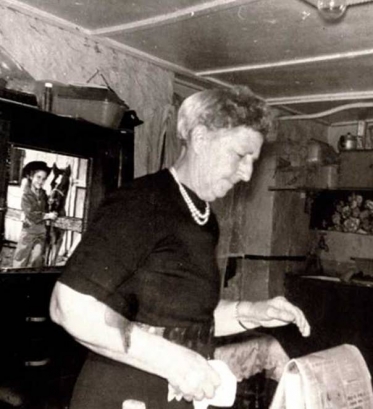
Mary ‘Girlie’ Andersen in No 58 Gloucester Street basement kitchen, c1950s.Courtesy Jack Andersen
Penny-power
Girlie lived at Susannah Place in Gloucester Street, the Rocks, from 1949-1964. The Andersen’s moved from number 64 to number 58 to take advantage of cheaper rent, and although they had the gas connected, it was piped into homes on a ‘pay-as-you-go’ penny operated meter system. Any opportunity to save on the gas, and therefore your pennies would have been welcome in poorer households, so this ‘uncooked’ chutney is likely to have had broad appeal in apple season.
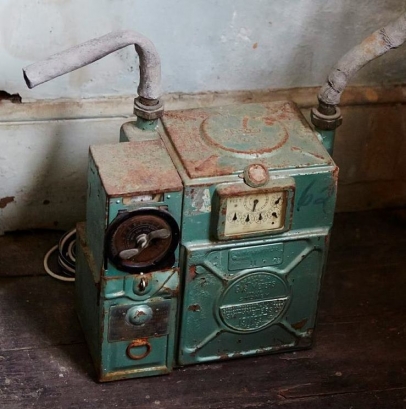
Penny operated gas meter, Susannah Place Museum. Photo © James Horan for Sydney Living Museums
‘Cooking’ without heat
Many cuisines have been characterised by the need for fuel efficiency – think fast and furious Chinese wok frying; Spanish paella and Moroccan tagines cooked in shallow broad-based to maximise contact with coals and embers; marinating meats in buttermilk or yoghurt to tenderise and par-cook to minimise cooking times before grilling kebabs, or baking tandoori style in a heat efficient almost-closed vessel. But food has long been prepared and indeed preserved without the need for heat and fuel. Just as heat alters the structure of foods, making them safer to eat and easier to digest – and often more flavoursome – other methods such as drying, smoking, salting, curing and pickling have been vitally important in almost all cuisines, often transforming foods into new delicacies.
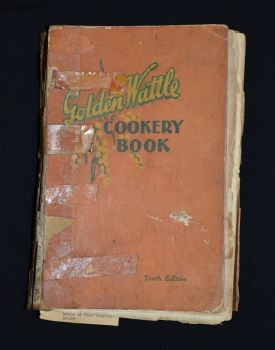
Golden Wattle Cookery Book c1948, used by the Andersen family at Susannah Place, The Rocks. Sydney Living Museums collection.
Basic principles
Each technique alters the food itself to kill off dangerous bacteria, or creates an environment which inhibits bacterial growth. Drying for example, eliminates or minimises moisture, essential for bacteria to grow; salt and sugar draw out moisture and storing food in salty brine or a strong sugar solution creates an anaerobic environment; fermentation produces natural chemical changes in which ‘good bacteria’ consume ‘bad’ bacteria in certain foods, allowing them to keep for considerable lengths of time; acids also prevents food from spoiling – vinegar or citrus being the most common and accessible acidic medium.
Time and alchemy
Chutneys, relishes and pickles draw on several of these processes of alchemy, often using salt and sugar to extract moisture, and vinegar to provide acidity. Many recipes involve lengthy cooking to soften the fruits or vegetables used as base ingredients, intensify flavours and boiling off excess moisture. In this uncooked chutney recipe, it is the combination of concentrated sugars and acidity in the vinegar that create the chutney.
As its is an uncooked product it is important to use good quality fruit. And as with all preserving processes it is important to use sterilised bottles to store the chutney. We have step by step sterilising instructions on this blog.
Apple chutney – uncooked
Ingredients
- 500g apples, peeled, cored and finely diced
- 375g seedless raisins, chopped
- 450g sugar
- 1 clove garlic, minced
- pinch cayenne pepper;
- 2 teaspoons salt
- 450ml apple cider vinegar
Note
This recipe is adapted from The Golden Wattle cookery book, c1948. The concentration of sugars and vinegar preserves the fruit, but it does need time for the apple to soften as it matures.
As its is an uncooked product it is important to use good quality fruit. And as with all preserving processes it is important to use sterilised bottles to store the chutney.
Directions
| Mix all the ingredients in a glass or ceramic bowl. Leave for three days, covered with a plate or cling film, stirring occasionally. Pack into sterile jars and store for 2 months before using. Once opened store in refrigerator for up to three months. | |
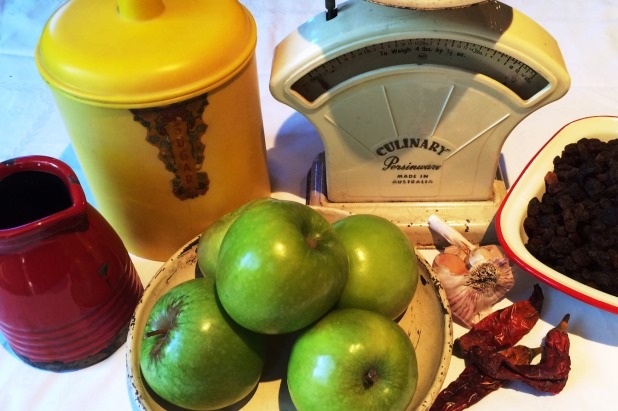
 Print recipe
Print recipe